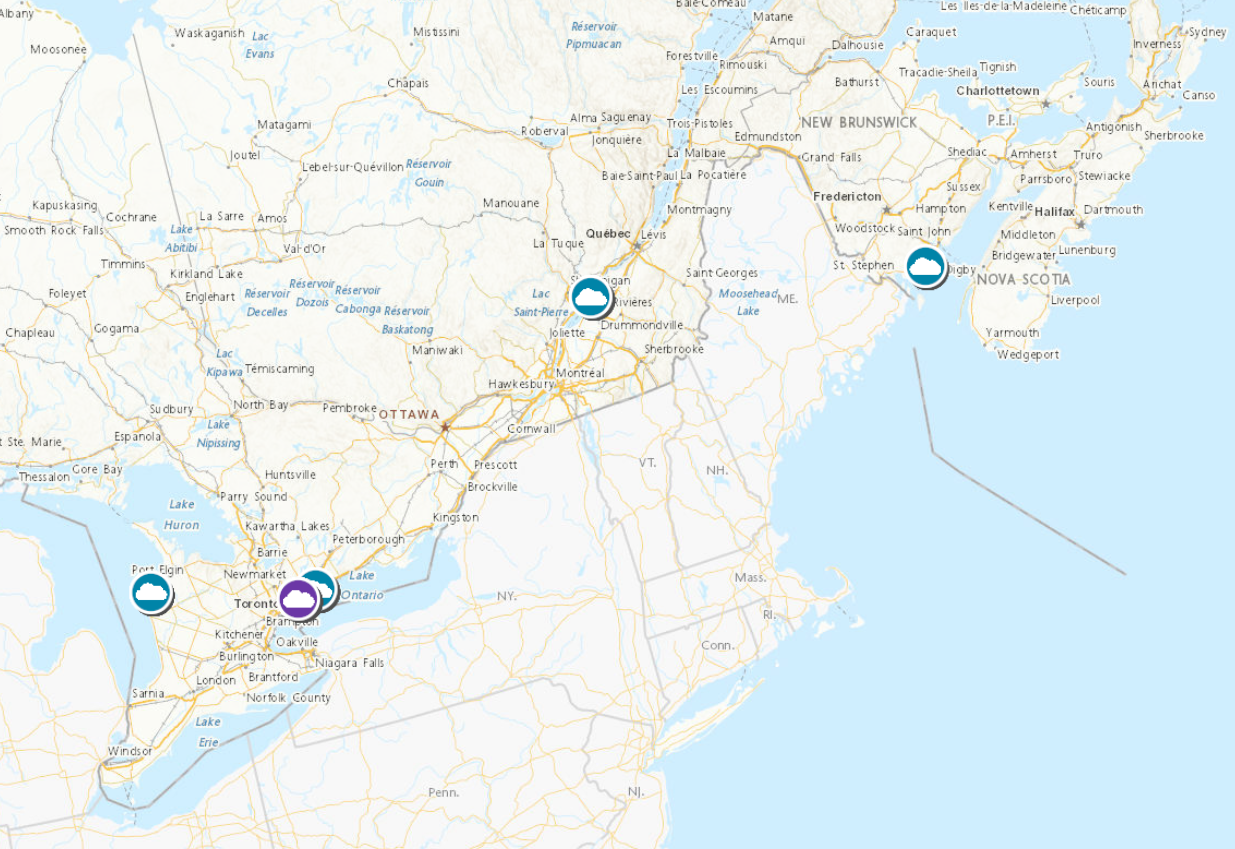Pollutants
Type of resources
Available actions
Topics
Keywords
Contact for the resource
Provided by
Formats
Representation types
Update frequencies
status
-

This dataset contains the total annual releases of radionuclides released directly to the environment through direct discharge from uranium and nuclear substance processing facilities in Canada. This original radionuclide releases dataset of the uranium and nuclear substance processing facilities provides results for both stack emissions and direct discharge (i.e. releases to water). The dataset has been divided in two subsets for better discoverability. In this record as its title indicates, you will find the direct discharge results mapped. Make sure to look at the uranium and nuclear substance processing facilities stack emissions record in order to obtain a complete picture.
-

This dataset contains the total annual releases of radionuclides released directly to the environment through stack emissions from facilities operated by Canadian Nuclear Laboratories in Canada. This original radionuclide releases dataset of the Canadian Nuclear Laboratories provides results for both stack emissions and direct discharge (i.e. releases to water). The dataset has been divided in two subsets for better discoverability. In this record as its title indicates, you will find the stack emissions results mapped. Make sure to look at the Canadian Nuclear Laboratories direct discharge record in order to obtain a complete picture. Regulatory Oversight Report for Canadian Nuclear Laboratories Sites - 2018: https://nuclearsafety.gc.ca/eng/resources/publications/reports/regulatory-oversight-reports/cnl-report-2018.cfm
-

This dataset contains the total annual releases of radionuclides released directly to the environment through direct discharge (i.e. releases to water) from facilities operated by Canadian Nuclear Laboratories in Canada. This original radionuclide releases dataset of the Canadian Nuclear Laboratories provides results for both stack emissions and direct discharge. The dataset has been divided in two subsets for better discoverability. In this record as its title indicates, you will find the direct discharge results mapped. Make sure to look at the Canadian Nuclear Laboratories stack emissions record in order to obtain a complete picture. Regulatory Oversight Report for Canadian Nuclear Laboratories Sites - 2018: https://nuclearsafety.gc.ca/eng/resources/publications/reports/regulatory-oversight-reports/cnl-report-2018.cfm
-

This dataset contains the total annual releases of radionuclides released directly to the environment through stack emissions from uranium and nuclear substance processing facilities in Canada. This original radionuclide releases dataset of the uranium and nuclear substance processing facilities provides results for both stack emissions and direct discharge (i.e. releases to water). The dataset has been divided in two subsets for better discoverability. In this record as its title indicates, you will find the stack emissions results mapped. Make sure to look at the uranium and nuclear substance processing facilities direct discharge record in order to obtain a complete picture.
-

This dataset contains the total annual releases of radionuclides released directly to the environment through direct discharge (i.e. releases to water) of the nuclear power plants in Canada. This original radionuclide releases dataset of the nuclear power plants provides results for both stack emissions and direct discharge. The dataset has been divided in two subsets for better discoverability. In this record as its title indicates, you will find the direct discharge results mapped. Make sure to look at the nuclear power plants stack emissions record in order to obtain a complete picture.
-

This dataset contains the total annual releases of radionuclides released directly to the environment through stack emissions of the nuclear power plants in Canada. This original radionuclide releases dataset of the nuclear power plants provides results for both stack emissions and direct discharge (i.e. releases to water). The dataset has been divided in two subsets for better discoverability. In this record as its title indicates, you will find the stack emissions results mapped. Make sure to look at the nuclear power plants direct discharge record in order to obtain a complete picture.
-

This dataset contains the total annual releases of radionuclides released directly to the environment through direct discharge (i.e. releases to water) from uranium mines and mills in Canada. Note that there is no stack emissions for the uranium mines and mills.
-

This dataset contains the total annual releases of radionuclides released directly to the environment through direct discharge (i.e. releases to water) from the closed mine sites near Elliot Lake, Ontario, Canada. Note that there is no stack emissions for the Elliot Lake.
-
The Canadian Environmental Sustainability Indicators (CESI) program provides data and information to track Canada's performance on key environmental sustainability issues. The Air quality indicators track ambient concentrations of fine particulate matter, ground-level ozone, sulphur dioxide, nitrogen dioxide, and volatile organic compounds at the national, regional and urban levels and at local monitoring stations. The national and regional indicators are presented with their corresponding Canadian Ambient Air Quality Standard when available. Canadians are exposed to air pollutants on a daily basis, and this exposure can cause adverse health and environmental effects. Information is provided to Canadians in a number of formats including: static and interactive maps, charts and graphs, HTML and CSV data tables and downloadable reports. See the supplementary documentation for the data sources and details on how the data were collected and how the indicator was calculated. Canadian Environmental Sustainability Indicators: https://www.canada.ca/environmental-indicators
-

The Canadian Nuclear Safety Commission (CNSC) is publishing a database with environmental monitoring results collected as part of the Eastern Athabasca Regional Monitoring Program. The samples are collected near communities located in northern Saskatchewan.
 Arctic SDI catalogue
Arctic SDI catalogue